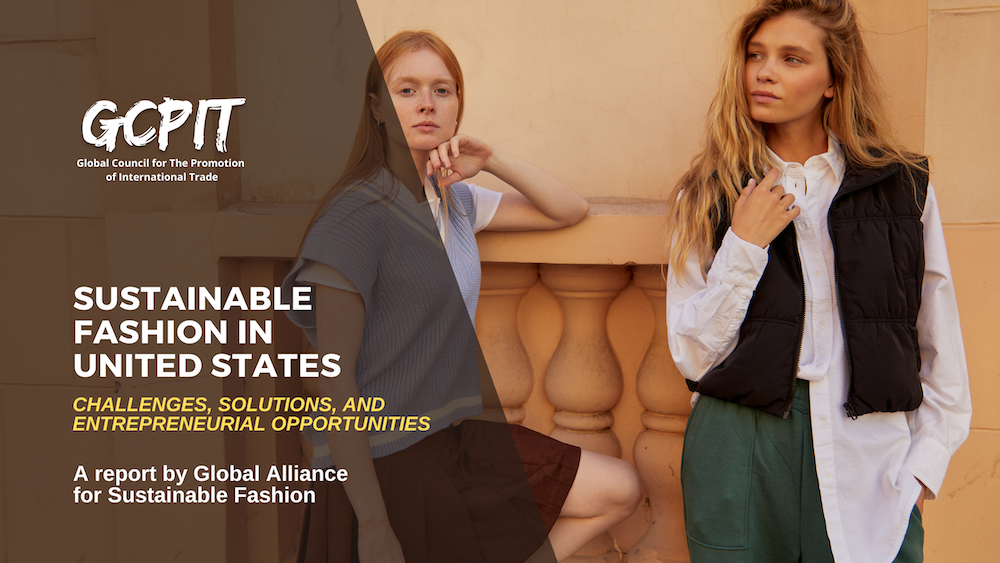How Cape Town Sustainable Fashion is Forming Eco-Conscious Purchasing
How Cape Town Sustainable Fashion is Forming Eco-Conscious Purchasing
Blog Article
Stay Ahead of the Curve by Exploring Innovative Style Fads
In a sector as vibrant as style, staying in advance involves even more than simply adhering to existing fads-- it demands an expedition of development. Smart textiles, as an example, are changing garments right into practical masterpieces, while 3D printing is reinventing layout procedures with its personalized, waste-reducing capacities. As sustainability becomes a cornerstone, advancements like green products and circular fashion techniques are improving environmental responsibility - Cape Town Sustainable Fashion. Furthermore, the merging of innovation and style heralds a new period of consumer engagement. Just how, then, can these arising trends redefine the future of style, and what ramifications do they hold for brands looking for to flourish in this evolving landscape?

Embracing Smart Textiles
Recently, the style sector has experienced a transformative change with the integration of smart textiles, a sophisticated innovation that mixes modern technology with material. This development stands for not just a blend of aesthetic appeals and performance yet likewise a significant jump towards sustainability and customization in fashion. Smart textiles, also referred to as e-textiles, embed sophisticated electronics such as sensing units and conductive threads within the material, enabling garments to engage with the atmosphere or the wearer.
These textiles are created to keep an eye on physical specifications, such as heart rate or body temperature, providing real-time health analytics. Past health applications, clever fabrics are also being made use of for flexible garments, which can alter color or pattern in response to ecological stimulations, therefore providing a dynamic style experience.
Additionally, the advancement of energy-harvesting fabrics that create power from motion or sunlight is leading the method for self-sufficient wearable technology. This innovation is interesting eco aware consumers and designers intending to decrease the ecological impact of fashion. As r & d in this area advancement, clever textiles are expected to end up being increasingly common, reshaping the landscape of modern-day fashion with their multifunctional capacities.
The Rise of 3D Printing
Revolutionizing the production landscape, 3D printing has arised as a game-changer in the garment industry. This cutting-edge innovation has allowed developers to push the borders of imagination, creating detailed and personalized garments that were formerly unthinkable. By leveraging electronic design and additive production, 3D printing facilitates the development of intricate geometries and patterns, allowing developers to experiment with new appearances and structures.
A noteworthy benefit of 3D printing in fashion is its ability to create on-demand, decreasing waste and decreasing stock demands. This efficiency not only maximizes manufacturing procedures but likewise permits rapid prototyping, enabling designers to bring their visions to life in a much shorter duration. Moreover, 3D printing sustains customization to a degree unequaled by typical methods, providing one-of-a-kind designs and personalized fits tailored to specific customer preferences.
The increase of 3D printing has additionally democratized style, making it obtainable to emerging developers that can now make premium pieces without considerable economic investment in traditional production framework. As innovation remains to advancement, the garment industry is positioned to harness the full potential of 3D printing, exploring new products and methods that will definitely redefine exactly how fashion is conceived and produced.
Sustainable Style Developments
As the style market comes to grips with journalism requirement for environmental responsibility, lasting style developments have arised at the leading edge of transformative modification. The growing recognition of environmental effect has sustained a shift towards more eco-conscious methods and materials. Brand names and designers are currently prioritizing sustainability, including approaches that lessen waste and decrease carbon impacts.
One significant advancement is the rise of circular style, which emphasizes recycling and upcycling to prolong the lifecycle of garments. This approach not only lowers waste but likewise urges consumers to take on a more mindful technique to clothing usage.
An additional innovation lies in the fostering of innovative dyeing methods that use all-natural dyes or waterless processes, thus lowering the large amounts of water and chemicals commonly used in textile dyeing. Moreover, innovations in biotechnology have brought about the creation of lab-grown leather and materials, supplying ecologically friendly and cruelty-free choices to standard products. Via these introducing initiatives, the style industry is making meaningful strides towards a much more sustainable future.

Tech-Integrated Garments
Tech-integrated clothing stands for a cutting-edge fusion of fashion and technology, improving just how people engage with their garments. This innovative domain name is marked by the incorporation of smart textiles and embedded electronic parts, boosting both performance and aesthetic allure. From health and fitness trackers installed in sportswear to warmed coats managed by means of smart device applications, tech-integrated clothing offers customers unprecedented comfort and versatility.
Introducing brand names are driving this pattern, focusing on producing garments that react to environmental stimuli or individual commands. For example, some garments can transform shade or pattern in feedback to temperature level shifts, while others incorporate biometric sensing units to keep an eye on health and wellness metrics like heart price or stress and anxiety levels. The smooth combination of technology into fabrics additionally expands to ecological sustainability, with initiatives to establish self-cleaning materials or garments that change to weather conditions, thus minimizing the demand for several layers.
Furthermore, the introduction of wearable technology is not just limited to clothing yet encompasses accessories like watches and eyewear, more expanding the range of tech-integrated style. As the industry proceeds to introduce, the potential for modification and customization in apparel expands, using consumers one-of-a-kind, tech-enhanced fashion experiences that other accommodate their private demands and choices.
Future of Virtual Fashion
In the last few years, the future of virtual style has become a transformative force within the sector, leveraging innovations in digital modern technology to redefine exactly how style is produced, experienced, and eaten. By integrating increased reality (AR), online fact (VR), and 3D layout tools, developers can now craft interactive and immersive experiences that transcend standard fashion boundaries. Online style permits the production of garments that exist entirely in electronic environments, using countless possibilities for technology without the constraints of physical production.
This electronic change not only provides possibilities for creative expression however additionally addresses sustainability issues integral in conventional fashion practices. Cape Town Sustainable Fashion. By getting rid of the demand for physical resources, online fashion minimizes waste and decreases carbon footprints. Moreover, the surge of digital fashion aligns with the boosting customer need for personalized and click here for more distinct experiences, as online garments can be personalized and customized to specific choices effortlessly

Conclusion
The fashion sector's future look at this now lies in the assimilation of innovative technologies and sustainable techniques. Digital style is positioned to redefine consumer communications.
In current years, the fashion market has actually witnessed a transformative shift with the combination of wise textiles, a cutting-edge advancement that blends technology with fabric.As the style sector grapples with the pushing demand for ecological responsibility, sustainable fashion technologies have actually arised at the forefront of transformative change.In recent years, the future of virtual style has actually arised as a transformative pressure within the sector, leveraging innovations in electronic technology to redefine how style is developed, experienced, and eaten. The increase of virtual fashion lines up with the boosting customer demand for tailored and one-of-a-kind experiences, as digital garments can be tailored and customized to private preferences with simplicity.
The fashion industry's future lies in the assimilation of lasting techniques and ingenious modern technologies.
Report this page